Written by Taseer Ahmad, Pharm. D., Ph.D.
I grew up in a village in the north of Pakistan, surrounded by beautiful mountains where we speak the language “Pushto.” Since childhood, I wanted to become a physician. So, even after putting in my best efforts, I was unable to get admission to the medical school in Pakistan. But it is important to have a plan B in life. In my case, plan B mostly works for me. So, I started my career as a pharmacist and chose Pharm.D. In my Master's studies, I studied Pharmacology as a subject of interest; this subject is shared by both Pharm.D and Medical students. Then, I tried tirelessly to get admission to one of the top 200 universities globally, but again, I revisited my Plan B and secured PhD admission in my native country. During PhD (Pharmacology) study, I was lucky to visit the Queen’s Medical Center, University of Nottingham, UK, through a short-term exchange program. The dream came true when I joined Vanderbilt University Medical Center (VUMC), one of the best Medical Schools in the US, as a postdoc research fellow.
The main objective of my career is to apply and upgrade my professional skills and experience in cardiovascular pharmacology. I want to use my scientific knowledge and communication skills to help in the development of novel therapeutics and to improve patients' lives. Before I discuss my research journey, I want to share that I taught basic Pharm.D subjects in Pharmaceutical Institutions of Pakistan to Pharm.D and Masters’ students for almost eight years. Currently, I am on study leave from the College of Pharmacy, University of Sargodha, Pakistan. So, I strived to balance both teaching and basic research in the last few years, which I also want to continue in the future.
My research area is Cardiovascular Pharmacology. For the last decade, I have been working on different techniques related to cardiovascular pathophysiology in animal models. In my early career, I worked on isolated rabbit hearts, and also learned how to measure non-invasive blood pressure using tail-cuff apparatus in animal models. Under the supervision of Dr Alamgeer, an Associate Professor in Pakistan, I learned the basic techniques in cardiovascular Pharmacology and published several articles in reputed journals. Then, I joined Prof. Dr. Abdul Jabbar Shah (Ex-Postdoc Fellow, Medical College of Wisconsin, US) laboratory in Pakistan. In Dr. Shah’s Lab I learned how to measure invasive BP in rat models, ECG analysis during myocardial infarction, and vascular reactivity in isolated rat aortic rings. In addition, during my PhD, I completed a six-month fellowship program under the supervision of Dr. Richard Roberts, Associate Professor, University of Nottingham, UK. In Dr. Richard’s lab, our study focused on the effect of some selected natural compounds on the porcine coronary artery.
After graduating in 2022, I joined Dr. Kirabo Lab as a Postdoctoral Research Fellow in December 2022, a recognised expert in salt-sensitive blood pressure and its immune-linked mechanism(s). Dr. Kirabo Lab at Vanderbilt University Medical Center (VUMC) is undoubtedly one of the best places I could ever dream of joining as a postdoctoral research fellow. My postdoc project provides me with new conceptual and technical training in cardiovascular-related disorders, particularly the role of monocytes in inflammation and salt-sensitivity of blood pressure. This will help me achieve my long-term goals to become a successful independent scientist. My training has thus far provided me with extensive basic science knowledge and technical skills and career development opportunities, including literature analysis, public speaking, responsible conduct of research, and career development. In Dr. Kirabo’s Lab I am working on multiple projects; the leading project is to study the role of Activated Protein-1 (FOS-JUN) complex in salt-sensitive blood pressure. Recently, we have published four articles in prestigious journals, and a few are under review.
In addition to my research activities, I co-chair the career development committee at Vanderbilt Postdoctoral Association (VPA). We have arranged different activities related to career development for Postdoc fellows, including a monthly Monday motivation letter and workshop on mentorship. The OPA board, along with the Vanderbilt Postdoctoral Association (VPA), are excellently keeping the postdoc community connected through the Annual VPA symposium and organising workshops. I am also a member of professional organisations such as the American Heart Association (AHA), the American Physiological Society (APS), and the European Society of Cardiology (ESC). During the last year of my stay at Vanderbilt, I was lucky to attend and present my research at the conferences organised by APS and AHA. The AHA awarded me a prestigious “Young Investigator Travel Award” to attend Hypertension Session 2023. I am also grateful to The Vascular Biology & Hypertension (VB&H), University of Alabama at Birmingham, for the “Travel Award” to attend the symposium in April 2023. I will credit my PI, Dr. Kirabo, for encouraging me and supporting me in attending these conferences, which just opened my mind to new horizons of thoughts in the field of medical research, specifically immune-mediated salt-sensitivity of blood pressure. Overall, I am grateful that I got the chance to work with all the amazing people who share a similar passion for biomedical research.
In my free time, I like to spend time with my family and friends, participate in volunteer activities, play cricket and football, hike, make tea (Chai), and cook different Pakistani-style food.

 Curiosity has always gotten the better of me. As a child, my curiosity had to be quite a difficult quality as I was always getting into SOMETHING. At home? It was my mother’s bathroom cabinet where I proceeded to put lotion in my hair, thinking it was mousse. At school? Instead of taking a nap, I would always sneak around opening cabinets to see what was inside. I guess it came as no surprise that I became a scientist as I always wanted to explore, learn new things, and discover the answers to my many, MANY questions.
Curiosity has always gotten the better of me. As a child, my curiosity had to be quite a difficult quality as I was always getting into SOMETHING. At home? It was my mother’s bathroom cabinet where I proceeded to put lotion in my hair, thinking it was mousse. At school? Instead of taking a nap, I would always sneak around opening cabinets to see what was inside. I guess it came as no surprise that I became a scientist as I always wanted to explore, learn new things, and discover the answers to my many, MANY questions. “All our dreams can come true, if we have the courage to pursue them”, I am quoting the famous quote by Walt Disney here because I have always been a dreamer. Ever since childhood, I dreamt of becoming someone who can cure people’s sickness. I always thought that only a clinician can do that since I grew up in a family of clinicians with medical degrees in different specializations.
“All our dreams can come true, if we have the courage to pursue them”, I am quoting the famous quote by Walt Disney here because I have always been a dreamer. Ever since childhood, I dreamt of becoming someone who can cure people’s sickness. I always thought that only a clinician can do that since I grew up in a family of clinicians with medical degrees in different specializations. Hello everyone! I am a current research assistant professor in the Psychology and Human Development department. I first joined the Vanderbilt community as a NIH T32 post-doctoral fellow under the mentorship of Drs. Autumn Kujawa and Kathryn Humphreys. With their support and guidance, and the incredible resources and support offered at Vanderbilt, I attained an NIMH K23 award this past summer. My research uses multiple methods to examine affective processes across the lifespan and within families, particularly as related to mood psychopathology.
Hello everyone! I am a current research assistant professor in the Psychology and Human Development department. I first joined the Vanderbilt community as a NIH T32 post-doctoral fellow under the mentorship of Drs. Autumn Kujawa and Kathryn Humphreys. With their support and guidance, and the incredible resources and support offered at Vanderbilt, I attained an NIMH K23 award this past summer. My research uses multiple methods to examine affective processes across the lifespan and within families, particularly as related to mood psychopathology. Ever since I can remember, I have always been curious about what other people were thinking, but it was not until a couple months ago that I realized that curiosity set me up perfectly to become a psychologist. My academic journey began my senior spring semester at Union College when my undergraduate psychology advisor looked at me and said “hey have you ever considered grad school?”. I went on to join Dr. Paul Windschitl’s Judgment, Decision, and Social Comparison lab in the Department Psychological and Brain Sciences at the University of Iowa. During my time as a member of that lab, I became an expert in how people make, interpret, and communicate judgments under uncertainty and risk. Most of my research examine the various factors that contribute to the accuracy (and bias) in the different types of judgments we make about ourselves and our future. For example, how does the different comparative information you surround yourself with predict the level of healthy behaviors you engage in? That’s one of the many questions I examined during my time at Iowa.
Ever since I can remember, I have always been curious about what other people were thinking, but it was not until a couple months ago that I realized that curiosity set me up perfectly to become a psychologist. My academic journey began my senior spring semester at Union College when my undergraduate psychology advisor looked at me and said “hey have you ever considered grad school?”. I went on to join Dr. Paul Windschitl’s Judgment, Decision, and Social Comparison lab in the Department Psychological and Brain Sciences at the University of Iowa. During my time as a member of that lab, I became an expert in how people make, interpret, and communicate judgments under uncertainty and risk. Most of my research examine the various factors that contribute to the accuracy (and bias) in the different types of judgments we make about ourselves and our future. For example, how does the different comparative information you surround yourself with predict the level of healthy behaviors you engage in? That’s one of the many questions I examined during my time at Iowa. I’m a biologist, a molecular geneticist or bioinformatician. But overarchingly, all my research has linked back to evolution. There are two patterns that emerged in my academic career path so far. One, I’ve always consciously chosen engaging and supportive mentors and PIs. Their passion for their field and teaching about it has captivated me and made for numerous wonderful research experiences in fantastic, supportive work environments. And two, at the same time, in terms of topics, I seem to gravitate towards topics I naïvely think aren’t as interesting, already solved, or too complicated to begin with. That’s of course before I start working on them –then I realize the opposite is true. Some readers might see a connection between the two tenets, and I would be inclined the agree with that.
I’m a biologist, a molecular geneticist or bioinformatician. But overarchingly, all my research has linked back to evolution. There are two patterns that emerged in my academic career path so far. One, I’ve always consciously chosen engaging and supportive mentors and PIs. Their passion for their field and teaching about it has captivated me and made for numerous wonderful research experiences in fantastic, supportive work environments. And two, at the same time, in terms of topics, I seem to gravitate towards topics I naïvely think aren’t as interesting, already solved, or too complicated to begin with. That’s of course before I start working on them –then I realize the opposite is true. Some readers might see a connection between the two tenets, and I would be inclined the agree with that. My journey started at Murray State University where I received my BS and MS in Occupational Safety and Health. Following in my father’s footsteps, I wanted to pursue a Ph.D and focus my research efforts on the health and well-being of firefighters. I always had a passion researching firefighters, and when I pursued my Ph.D in the Occupational Injury Prevention program at the University of Minnesota, I had the opportunity to work alongside my mentor, Dr. Hyun Kim, researching mental health in firefighters. These opportunities inspired me to investigate an emerging mental health condition, referred to as moral injury. This condition is highly researched among military veterans and the measurement scales recently became available to screen for moral injury; however, no measurement scale was available for firefighters.
My journey started at Murray State University where I received my BS and MS in Occupational Safety and Health. Following in my father’s footsteps, I wanted to pursue a Ph.D and focus my research efforts on the health and well-being of firefighters. I always had a passion researching firefighters, and when I pursued my Ph.D in the Occupational Injury Prevention program at the University of Minnesota, I had the opportunity to work alongside my mentor, Dr. Hyun Kim, researching mental health in firefighters. These opportunities inspired me to investigate an emerging mental health condition, referred to as moral injury. This condition is highly researched among military veterans and the measurement scales recently became available to screen for moral injury; however, no measurement scale was available for firefighters. I think of life as a canvas, initially blank, full of endless possibilities, and over time, together with the people around us, we get to paint a masterpiece. Some paint strokes are also added by environmental factors, experiences, and things beyond our control. As a developmental scientist, I’ve always been curious about influences during critical periods (especially early childhood through adolescence) in people’s lives and how these impact their developmental trajectories. This curiosity began as an emerging adult while I helped take care of my nephew in his early years. As any psychology undergraduate would, I tested many of the developmental psychology concepts I had learned in class on this fascinating little human (e.g., the marshmallow experiment on delayed gratification). I was mostly intrigued by his curiosity and motivation in the early years, how quickly he learned to speak, and how his mind went from processing concrete ideas to abstract concepts. His learning in these early years could be likened to random strokes on a canvas, exploring different media and tools while building a masterpiece. Unfortunately, I also saw how later on, structured learning and the rigorous demands of the education system took away the joy and dimmed the spark in his eye. Learning shifted from joyous exploration to structured, rote, and a performance done to fulfill external expectations.
I think of life as a canvas, initially blank, full of endless possibilities, and over time, together with the people around us, we get to paint a masterpiece. Some paint strokes are also added by environmental factors, experiences, and things beyond our control. As a developmental scientist, I’ve always been curious about influences during critical periods (especially early childhood through adolescence) in people’s lives and how these impact their developmental trajectories. This curiosity began as an emerging adult while I helped take care of my nephew in his early years. As any psychology undergraduate would, I tested many of the developmental psychology concepts I had learned in class on this fascinating little human (e.g., the marshmallow experiment on delayed gratification). I was mostly intrigued by his curiosity and motivation in the early years, how quickly he learned to speak, and how his mind went from processing concrete ideas to abstract concepts. His learning in these early years could be likened to random strokes on a canvas, exploring different media and tools while building a masterpiece. Unfortunately, I also saw how later on, structured learning and the rigorous demands of the education system took away the joy and dimmed the spark in his eye. Learning shifted from joyous exploration to structured, rote, and a performance done to fulfill external expectations.
 I was born and raised in Chengdu, China—a large city known for its pandas, a chill attitude towards life, spicy cuisine, tea culture, and folk music. In high school, I got involved in biomedical informatics research at West China Hospital, where I witnessed the transformative power of information technology in improving work efficiency. I also saw firsthand how immature tool design in electronic health records (EHR) could significantly impact healthcare professionals’ performance, especially considering the demanding workload in Chinese hospitals.
I was born and raised in Chengdu, China—a large city known for its pandas, a chill attitude towards life, spicy cuisine, tea culture, and folk music. In high school, I got involved in biomedical informatics research at West China Hospital, where I witnessed the transformative power of information technology in improving work efficiency. I also saw firsthand how immature tool design in electronic health records (EHR) could significantly impact healthcare professionals’ performance, especially considering the demanding workload in Chinese hospitals. When I was in preschool, I was sent home with a teacher report labeling me as a “happy, busy, and curious” student. While that combination of words seems to describe a handful of a four-year-old, I would say the phrase still does an excellent job of capturing my personality and the drive which propelled me into the field of biomedical engineering (BME). As a senior in high school considering different undergraduate majors, I stumbled across a university webpage describing their BME department. I was enthralled – “Math plus science plus problem solving plus helping other people!? Sign me up!” The field is multidisciplinary by nature, using an engineering mindset and toolbelt to solve biological problems and create solutions to help improve human health and healthcare. Through formative experiences and guiding mentors during my time as an undergraduate at the University of Texas at Austin, a graduate student in a joint program at Georgia Tech and Emory University, and now as a postdoc in the Vanderbilt BME department in the lab of Cynthia Reinhart-King, I can proudly add “mechanobiologist” to my “happy, busy, curious” list.
When I was in preschool, I was sent home with a teacher report labeling me as a “happy, busy, and curious” student. While that combination of words seems to describe a handful of a four-year-old, I would say the phrase still does an excellent job of capturing my personality and the drive which propelled me into the field of biomedical engineering (BME). As a senior in high school considering different undergraduate majors, I stumbled across a university webpage describing their BME department. I was enthralled – “Math plus science plus problem solving plus helping other people!? Sign me up!” The field is multidisciplinary by nature, using an engineering mindset and toolbelt to solve biological problems and create solutions to help improve human health and healthcare. Through formative experiences and guiding mentors during my time as an undergraduate at the University of Texas at Austin, a graduate student in a joint program at Georgia Tech and Emory University, and now as a postdoc in the Vanderbilt BME department in the lab of Cynthia Reinhart-King, I can proudly add “mechanobiologist” to my “happy, busy, curious” list. Every year, over 100 billion bananas are consumed globally. In 2021, the average American ate 26.87 pounds of bananas a year, or roughly 100 bananas. Bananas are everywhere. The vast majority of those bananas, especially in the United States, are Cavendish bananas, which since the 1950s has been the nearly ubiquitous commercial banana variety. But this was not always the case. From the late-nineteenth century, when bananas started to become a household staple, through the first half of the twentieth-century, nearly all commercially sold bananas were of the Gros Michel variety. Millions of those came from Jamaica. While Central and South American countries are today the predominant banana exporters, during the era of the Gros Michel, Jamaica was the world’s leading banana exporter. But the ubiquity of the Gros Michel, and of Jamaica as a banana exporter, came crashing down due to a soil-based fungus known as Panama Disease. My research explores this multispecies story of the history of Panama Disease in colonial Jamaica.
Every year, over 100 billion bananas are consumed globally. In 2021, the average American ate 26.87 pounds of bananas a year, or roughly 100 bananas. Bananas are everywhere. The vast majority of those bananas, especially in the United States, are Cavendish bananas, which since the 1950s has been the nearly ubiquitous commercial banana variety. But this was not always the case. From the late-nineteenth century, when bananas started to become a household staple, through the first half of the twentieth-century, nearly all commercially sold bananas were of the Gros Michel variety. Millions of those came from Jamaica. While Central and South American countries are today the predominant banana exporters, during the era of the Gros Michel, Jamaica was the world’s leading banana exporter. But the ubiquity of the Gros Michel, and of Jamaica as a banana exporter, came crashing down due to a soil-based fungus known as Panama Disease. My research explores this multispecies story of the history of Panama Disease in colonial Jamaica.
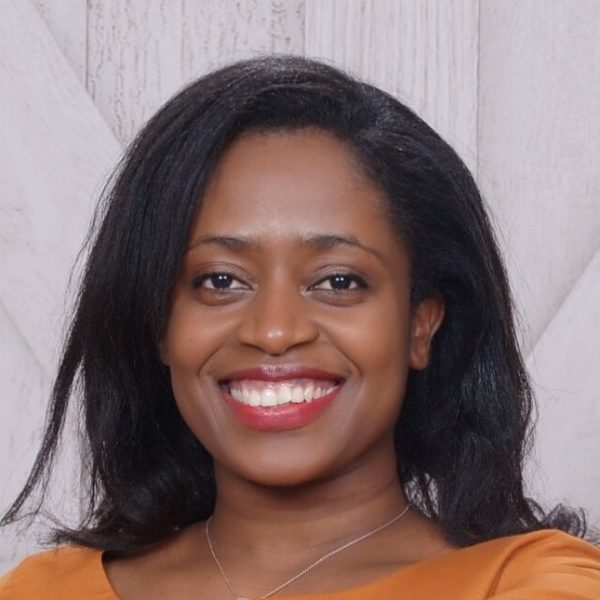 I was born and lived in Rwanda for the first 17 years of my life before moving to the United States to pursue a college education. For most of my childhood, I suffered from chronic bronchitis but had limited access to proper medication. As a result, my family turned to food and herbal concoctions to manage my illness. I eventually outgrew the disease in my teenage years but have continued to be intrigued by the power of food as medicine. This fascination would later turn into a scientific endeavor in my undergraduate education as a chemistry major through subjects including analytical and medicinal chemistry. This interest led me to pursue a PhD in Experimental Therapeutics and Pharmacology, the beginning of my research pursuit in the cardiovascular disease space. My work there focused on understanding the cause and testing potential new treatment options for preeclampsia, a type of high blood pressure that develops specifically in pregnant women. We know that many detrimental effects of cardiovascular disease can be mitigated by lifestyle changes including a healthy diet and exercise. My research interests and fascination with the therapeutic power of food finally collided when I learned about the microbiome. I began studying the interplay between the gut microbiome and dietary elements in health and cardiovascular disease.
I was born and lived in Rwanda for the first 17 years of my life before moving to the United States to pursue a college education. For most of my childhood, I suffered from chronic bronchitis but had limited access to proper medication. As a result, my family turned to food and herbal concoctions to manage my illness. I eventually outgrew the disease in my teenage years but have continued to be intrigued by the power of food as medicine. This fascination would later turn into a scientific endeavor in my undergraduate education as a chemistry major through subjects including analytical and medicinal chemistry. This interest led me to pursue a PhD in Experimental Therapeutics and Pharmacology, the beginning of my research pursuit in the cardiovascular disease space. My work there focused on understanding the cause and testing potential new treatment options for preeclampsia, a type of high blood pressure that develops specifically in pregnant women. We know that many detrimental effects of cardiovascular disease can be mitigated by lifestyle changes including a healthy diet and exercise. My research interests and fascination with the therapeutic power of food finally collided when I learned about the microbiome. I began studying the interplay between the gut microbiome and dietary elements in health and cardiovascular disease. After a months-long intentional process of planning, recruiting, and gathering congregants to listen to one another about their core values and most pressing community issues, the church invited our local council member to hear what we discovered about our congregation and community. We had come a long way. As a member institution of the local Gamaliel affiliate, Nashville Organized for Action and Hope (NOAH), the congregation I attended had recently finished a listening campaign and was preparing to present its findings to the council member. So, when the pastor at our largely white Protestant church invited the congregation to the meeting, I was surprised to hear him say rather definitively, “Now, this is not a political meeting.” I could not believe my ears. “Why did you put it that way?” I later asked him. We were clear on what issues we wanted to present and more importantly, we were clear on why those values were so central to our faith. We had built relational power and we wanted to act. We wanted the council member to know we were paying attention. The pastor said in response that some in the congregation were worried that the council member might get the impression we were telling people to vote for a specific party. “That’s partisanship,” I said, “not politics.” More than that, politics is about the goods we hold in common and our life together — Christian faith is deeply concerned about that.
After a months-long intentional process of planning, recruiting, and gathering congregants to listen to one another about their core values and most pressing community issues, the church invited our local council member to hear what we discovered about our congregation and community. We had come a long way. As a member institution of the local Gamaliel affiliate, Nashville Organized for Action and Hope (NOAH), the congregation I attended had recently finished a listening campaign and was preparing to present its findings to the council member. So, when the pastor at our largely white Protestant church invited the congregation to the meeting, I was surprised to hear him say rather definitively, “Now, this is not a political meeting.” I could not believe my ears. “Why did you put it that way?” I later asked him. We were clear on what issues we wanted to present and more importantly, we were clear on why those values were so central to our faith. We had built relational power and we wanted to act. We wanted the council member to know we were paying attention. The pastor said in response that some in the congregation were worried that the council member might get the impression we were telling people to vote for a specific party. “That’s partisanship,” I said, “not politics.” More than that, politics is about the goods we hold in common and our life together — Christian faith is deeply concerned about that.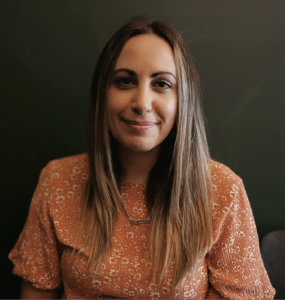 When most people think of the periodic table, they remember a large poster hanging toward the front of a lecture hall. They might imagine a looming, asymmetric expanse of symbols that remained relevant from year one to year four. Even though this massive chart on the wall integrates other fields of science such as biology and physics, the connection between those disciplines was not immediately apparent. Most will remember this table with feelings of fascination, curiosity, and loathing. Reading the periodic table by its own set of grammatical rules reveals a whole series of new stories and laws of periodic assembly, all governed by electrons. I was a first-generation, non-traditional college student when I had my first encounter with chemistry. I could not have been more apprehensive, but I swiftly became captivated with how atoms fill their inner, low-energy levels as full as possible with their own electrons, then shed, steal, or share electrons in their outermost shell to achieve stability. Electrons not only constitute the organization of the periodic table, but their distribution also affects the behavior and reactivity of molecules.
When most people think of the periodic table, they remember a large poster hanging toward the front of a lecture hall. They might imagine a looming, asymmetric expanse of symbols that remained relevant from year one to year four. Even though this massive chart on the wall integrates other fields of science such as biology and physics, the connection between those disciplines was not immediately apparent. Most will remember this table with feelings of fascination, curiosity, and loathing. Reading the periodic table by its own set of grammatical rules reveals a whole series of new stories and laws of periodic assembly, all governed by electrons. I was a first-generation, non-traditional college student when I had my first encounter with chemistry. I could not have been more apprehensive, but I swiftly became captivated with how atoms fill their inner, low-energy levels as full as possible with their own electrons, then shed, steal, or share electrons in their outermost shell to achieve stability. Electrons not only constitute the organization of the periodic table, but their distribution also affects the behavior and reactivity of molecules. Some people are driven from a very young age toward a specific career path; it can be related to the education they received, their parents’ jobs, or the heroes they used to admire. However, nothing destined me to become a scientist. When thinking about the roots of my scientific passion, it is difficult to pinpoint when my interest first began. I grew up as the youngest child of a non-scientific family of four in Lyon, France, which is the second largest French city after Paris. Lyon is considered to be the French food capital and, interestingly, my passion for food is likely what led me to pursue a scientific path.
Some people are driven from a very young age toward a specific career path; it can be related to the education they received, their parents’ jobs, or the heroes they used to admire. However, nothing destined me to become a scientist. When thinking about the roots of my scientific passion, it is difficult to pinpoint when my interest first began. I grew up as the youngest child of a non-scientific family of four in Lyon, France, which is the second largest French city after Paris. Lyon is considered to be the French food capital and, interestingly, my passion for food is likely what led me to pursue a scientific path.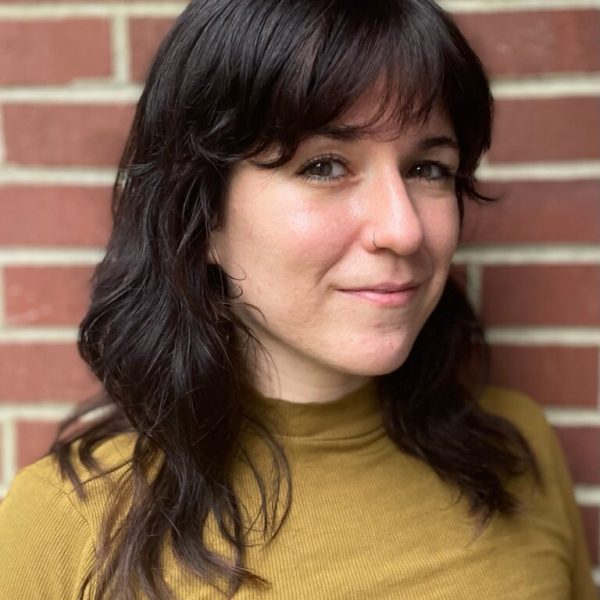 Like many kids that grew up with immigrant parents in the US, the first language I learned was not English. By the time I started grade school, I had some working knowledge of English, but I was still placed in an ESOL (English to Speakers of Other Languages) program.
Like many kids that grew up with immigrant parents in the US, the first language I learned was not English. By the time I started grade school, I had some working knowledge of English, but I was still placed in an ESOL (English to Speakers of Other Languages) program.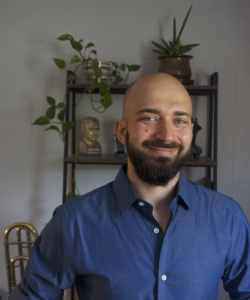 Music has always been very important to me. I learned how to read with a sing-along book, and have relied on music to help me process and express my emotions for as long as I can remember. When I learned that scientists were harnessing music to help people with neurological diseases like Alzheimer’s or Parkinson’s, I knew I wanted to be involved.
Music has always been very important to me. I learned how to read with a sing-along book, and have relied on music to help me process and express my emotions for as long as I can remember. When I learned that scientists were harnessing music to help people with neurological diseases like Alzheimer’s or Parkinson’s, I knew I wanted to be involved. Symmetry occurs everywhere in the natural world, from the atomic structures of different materials, to the spherical shapes of stars and planets, to the bilateral symmetry present in many animals. I study group theory, which is the mathematical language that describes symmetry in all its myriad forms. After completing my PhD at the University of Oxford, I am now one year into my postdoc here at Vanderbilt, and I have had a great time so far. I am grateful for the support I have received from colleagues and mentors within the math department, as well as from the wider Vanderbilt community.
Symmetry occurs everywhere in the natural world, from the atomic structures of different materials, to the spherical shapes of stars and planets, to the bilateral symmetry present in many animals. I study group theory, which is the mathematical language that describes symmetry in all its myriad forms. After completing my PhD at the University of Oxford, I am now one year into my postdoc here at Vanderbilt, and I have had a great time so far. I am grateful for the support I have received from colleagues and mentors within the math department, as well as from the wider Vanderbilt community.
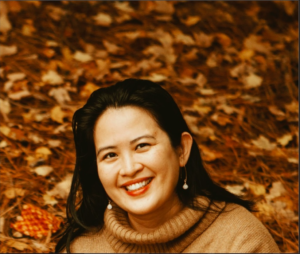 Preparing to move to Nashville in August 2020 was both nerve-wracking and thrilling for me. I was excited to move to Nashville, to be around a famed music scene, and to teach at a place like the Blair School. On the other hand, the pandemic had created a great deal of uncertainty, and I was unsure of what life in the American South would be like. As someone who grew up in the Philippines, my conception of the United States before coming to the cornfields and dairy lands of the Midwest to pursue graduate school was primarily informed by coastal influences.
Preparing to move to Nashville in August 2020 was both nerve-wracking and thrilling for me. I was excited to move to Nashville, to be around a famed music scene, and to teach at a place like the Blair School. On the other hand, the pandemic had created a great deal of uncertainty, and I was unsure of what life in the American South would be like. As someone who grew up in the Philippines, my conception of the United States before coming to the cornfields and dairy lands of the Midwest to pursue graduate school was primarily informed by coastal influences. When we think about the most common ways people get sick, things like the most recent COVID-19 pandemic are quick to jump to the top of our list. We may also think about all the different types of cancer that have affected our friends and loved ones. But it turns out, for the past 100 years or so, heart disease has been the leading cause of mortality in the United States and across the world. Large epidemiological studies have shown that the number one risk factor for developing heart disease is elevated blood pressure, which we call hypertension. According to the latest guidelines from the American Heart Association and the American College of Cardiology, 46% of Americans are hypertensive which means that 1 out of every 2 people that end up reading this are probably hypertensive. With such a high prevalence and risk for contributing to not only cardiovascular but other chronic diseases, developing novel treatment strategies is critical.
When we think about the most common ways people get sick, things like the most recent COVID-19 pandemic are quick to jump to the top of our list. We may also think about all the different types of cancer that have affected our friends and loved ones. But it turns out, for the past 100 years or so, heart disease has been the leading cause of mortality in the United States and across the world. Large epidemiological studies have shown that the number one risk factor for developing heart disease is elevated blood pressure, which we call hypertension. According to the latest guidelines from the American Heart Association and the American College of Cardiology, 46% of Americans are hypertensive which means that 1 out of every 2 people that end up reading this are probably hypertensive. With such a high prevalence and risk for contributing to not only cardiovascular but other chronic diseases, developing novel treatment strategies is critical.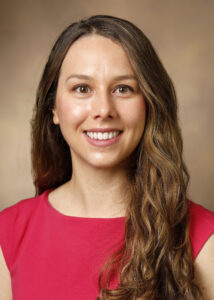
 Around mid-March of 2020, a pandemic was declared due to COVID19. This pandemic affected lives of billions of people, including international students and scholars, in an unprecedented way. I was no different; my first postdoc position got pushed back by several months due to lockdowns and institutional hiring freezes. In late October 2020, I was finally able to start my postdoc journey at VUMC, a world-class medical center. Trained as a biomaterialist and protein chemist, I based my decision of choosing a research lab that aligned with my background, suited my interest in engineering biomaterials for immune modulation with a translational research focus, and held a good publication record. I secured a postdoc position in an immunology lab at VUMC, where my postdoctoral assignment was on the identification of protective CD8+ T cell epitopes for developing a protein-based vaccine delivery platform to design next-generation vaccines for infectious diseases. The project was of immense interest and importance to me, as it allowed me to apply my previously acquired skills to engineer a biomaterial for the target purposes while also developing new skills to elucidate the molecular insights regarding antigen presentation. I believed such insights could be leveraged in the battle against other infectious agents such as COVID19. As I continued research work, I expanded my skills in immunology by performing immunoassays and in vivo studies to assess the immunogenicity of in silico identified immunodominant peptide epitopes in transgenic animal models. Though I valued this opportunity, I found myself questioning whether I had found my own true place in the Vanderbilt community. After discussing this with my mentors at the time, I began to seek out a new research environment. About a year after, I switched to Prof. Brunger’s lab in BME at VU where I felt the research program and lab ethos could support me in both my postdoctoral endeavors and long-term goal of obtaining a position in the gene and cell therapy industry.
Around mid-March of 2020, a pandemic was declared due to COVID19. This pandemic affected lives of billions of people, including international students and scholars, in an unprecedented way. I was no different; my first postdoc position got pushed back by several months due to lockdowns and institutional hiring freezes. In late October 2020, I was finally able to start my postdoc journey at VUMC, a world-class medical center. Trained as a biomaterialist and protein chemist, I based my decision of choosing a research lab that aligned with my background, suited my interest in engineering biomaterials for immune modulation with a translational research focus, and held a good publication record. I secured a postdoc position in an immunology lab at VUMC, where my postdoctoral assignment was on the identification of protective CD8+ T cell epitopes for developing a protein-based vaccine delivery platform to design next-generation vaccines for infectious diseases. The project was of immense interest and importance to me, as it allowed me to apply my previously acquired skills to engineer a biomaterial for the target purposes while also developing new skills to elucidate the molecular insights regarding antigen presentation. I believed such insights could be leveraged in the battle against other infectious agents such as COVID19. As I continued research work, I expanded my skills in immunology by performing immunoassays and in vivo studies to assess the immunogenicity of in silico identified immunodominant peptide epitopes in transgenic animal models. Though I valued this opportunity, I found myself questioning whether I had found my own true place in the Vanderbilt community. After discussing this with my mentors at the time, I began to seek out a new research environment. About a year after, I switched to Prof. Brunger’s lab in BME at VU where I felt the research program and lab ethos could support me in both my postdoctoral endeavors and long-term goal of obtaining a position in the gene and cell therapy industry.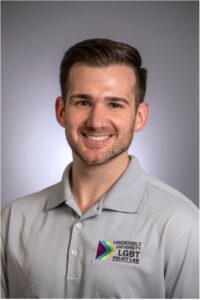 My postdoctoral appointment at Vanderbilt University has been transformative. I arrived at Vanderbilt in 2020 after preparing and being awarded a Diversity Supplement Award, the first-ever awarded on the basis of sexual and gender minority status at the National Institutes of Health. This award has allowed me to analyze novel data from the Vanderbilt University Social Networks, Aging, and Policy Study, a panel study of middle-age and older LGBTQ+ adults living in Alabama, Georgia, North Carolina, and Tennessee. The goal of this project, which is led by the fabulous Dr. Tara McKay, is to understand connections among LGBTQ+ people’s life experiences, social networks, political environment, and health. As a queer person who has lived in the U.S. South my entire life, I am proud to work on projects that have potential to improve the lives of LGBTQ+ people—a community to which I proudly belong.
My postdoctoral appointment at Vanderbilt University has been transformative. I arrived at Vanderbilt in 2020 after preparing and being awarded a Diversity Supplement Award, the first-ever awarded on the basis of sexual and gender minority status at the National Institutes of Health. This award has allowed me to analyze novel data from the Vanderbilt University Social Networks, Aging, and Policy Study, a panel study of middle-age and older LGBTQ+ adults living in Alabama, Georgia, North Carolina, and Tennessee. The goal of this project, which is led by the fabulous Dr. Tara McKay, is to understand connections among LGBTQ+ people’s life experiences, social networks, political environment, and health. As a queer person who has lived in the U.S. South my entire life, I am proud to work on projects that have potential to improve the lives of LGBTQ+ people—a community to which I proudly belong.
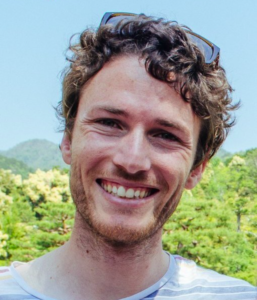 My great-grandma, a Latin teacher in Paris in the 1930’s, had a painful tooth so she went to see a dentist. There, she noticed a book on the dentist’s desk: Time and Free Will: An Essay on the Immediate Data of Consciousness by Henri Bergson. Impressed, she looked up to notice the dentist.
My great-grandma, a Latin teacher in Paris in the 1930’s, had a painful tooth so she went to see a dentist. There, she noticed a book on the dentist’s desk: Time and Free Will: An Essay on the Immediate Data of Consciousness by Henri Bergson. Impressed, she looked up to notice the dentist.
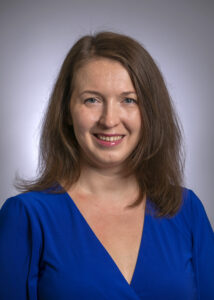 As I write this column on my last official workday at Vanderbilt and in the United States, I am feeling immensely grateful for all the amazing and life-changing experiences that I have had here during my four years as a postdoctoral research fellow. Thanks to the continuous support of my wonderful mentors, colleagues, and access to a wide variety of Vanderbilt resources, I have grown on both professional and personal level beyond what I ever imagined. I also cannot help but feel a bit of sadness – I am leaving a place that I have come to call home, a place where I feel like I belong. I will greatly miss my mentors, mentees, and colleagues at the Vanderbilt Dermatology Translational Research Clinic (VDTRC), the Department of Dermatology, Vanderbilt Biophotonics Center, and the Stem Cell Transplant clinic. I am hoping that many of them will become future collaborators as I transition to a new position back home, at the University of Latvia.
As I write this column on my last official workday at Vanderbilt and in the United States, I am feeling immensely grateful for all the amazing and life-changing experiences that I have had here during my four years as a postdoctoral research fellow. Thanks to the continuous support of my wonderful mentors, colleagues, and access to a wide variety of Vanderbilt resources, I have grown on both professional and personal level beyond what I ever imagined. I also cannot help but feel a bit of sadness – I am leaving a place that I have come to call home, a place where I feel like I belong. I will greatly miss my mentors, mentees, and colleagues at the Vanderbilt Dermatology Translational Research Clinic (VDTRC), the Department of Dermatology, Vanderbilt Biophotonics Center, and the Stem Cell Transplant clinic. I am hoping that many of them will become future collaborators as I transition to a new position back home, at the University of Latvia.